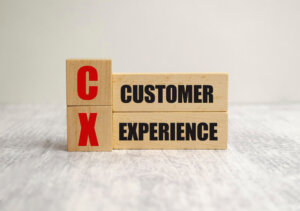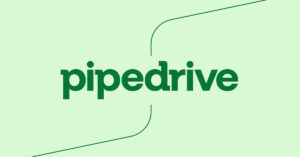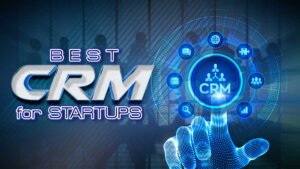© Copyright Carter McNamara, MBA, PhD, Authenticity Consulting, LLC.
Although Customer Service Management there is a conventional difference between the terms “customer” and “client,” this topic refers to “customers” as meaning both. Also, although a product is a tangible offering and a service is an intangible offering, this topic often refers to “products” as meaning both. The activities of customer service apply to any type and size of the organization, so the term “organization” refers to that wide variety. Before reading this topic, you might read about the Relationship Between Managing Supply Chain, Operations, Quality, Customer Relationships, and Customer Service.
Sections of This Topic Include
Understanding Customers and Service
- Why is Great Customer Service More Important Than Ever?
- What is a Customer? Consumer? Client?
- Types of Customers
- Types of Customer Needs
- What Customers Really Value
- What is Customer Service?
Preparing for Providing Great Customer Service
- Create a Customer Service Management Plan
- Begin Changing Your Organization’s Culture
- Train Your Employees About Customer Service
Satisfying Your Customers
- Clearly Identify Customers’ Needs
- Meet Customers’ Needs
- Get Customers’ Feedback
- Measure Customers’ Satisfaction
Retaining Your Customers
- Retain Customers
- Manage Customer Complaints
- Manage Customer Relationships
- Evaluate Your Customer Service Management System
General Resources
UNDERSTAND CUSTOMERS AND CUSTOMER SERVICE
Why is Great Customer Service More Important Than Ever?
In the past, an organization was expected to provide a product or service to the customer, and then that transaction was done — the activity was done to the customer. The customer was more or less at the mercy of the organization.
Today, that is changing dramatically. Customers have a much wider range of organizations, products, and services to choose from, and they can access them instantly. Customers can also access numerous sources of useful opinions or reviews about the product or service even before they buy it.
Thus, it is more important than ever that organizations remain very good at attracting, satisfying and retaining customers. Customer service has moved beyond being merely transactional to being highly relational.
What is a Customer? Consumer? Client?
Before we continue, we should get clear on what we are talking about. Different terms mean different things to different people. Here is a broad and useful definition of a customer:
- “In sales, commerce, and economics, a customer (sometimes known as a client, buyer, or purchaser) is the recipient of a good, service, product or an idea – obtained from a seller, vendor, or supplier via a financial transaction or exchange for money or some other valuable consideration.” Wikipedia
A customer becomes a consumer once the recipient begins to use the product or service. A client is a recipient who buys services from an organization, particularly a professional service. For example, nonprofit organizations typically use the term “client” to refer to anyone who benefits from their products and services.
Types of Customers
The topic of customers and customer service can seem so broad that it is difficult to get a good grasp on understanding them and how to best serve them. It helps a great deal to understand that there are different types of customers. You should recognize them, prioritize them, and use that ranking in your product development, sales, marketing, and customer service.
- Different Types of Customers
- 5 Types of Customers and How to Approach Them (Pt1)
- 7 Types of Customers and How to Convert Each of Them
- The 11 Universal Types of Customers You Need to Know
Organizations can have internal and external customers. An example of an internal customer is a department in an organization that receives services from another department. For example, the Human Resource Department might get its budget managed — that is, serviced — by the Finance Department. An example of an external customer is a person who buys shoes from a shoe store.
Types of Customer Needs
Your organization, regardless of its type or size, cannot survive unless it is meeting the needs of its customers. There is a saying in marketing that customers come to a product or service based on what they want, but they stay based on what they need.
However, there is a vast array of different types of needs that different types of customers have. Also, customers’ needs can change rapidly as they grapple to adapt to a rapidly changing world.
Similar to knowing the types of customers above, it helps to understand the different overall types of needs that they have. What different types (segments) of customers do you have based on their different needs? What types of needs are each of your products and services meeting for each segment? What types do you want to serve instead or in addition to?
- 16 Types of Customer Needs (and How to Solve for Them)
- The Six Basic Needs of Customers
- The Four Needs of a Customer
- 19 Types of Customer Needs
What Customers Value
There is a difference between knowing the typical needs of customers compared to actually meeting their needs. To begin meeting those needs, it is important to consider what different types of customers typically value in meeting their own needs. To some customers, value is the lowest price. To others, value represents prestige.
To others, it represents long-lasting quality. What do your customers value the most from the products and services? How does that value differentiate you from your competitors? Write your unique value proposition.
- Customer Value: What is Customer Value?
- The 30 Things Your Customers Value Most
- Value (Marketing)
- The Harvard Business Review’s Top 30 Customer Values
- Four Types of Value a Product Offers to a Customer
What is Customer Service?
In the past, customer service usually meant being understanding and courteous to your customers while they were buying your product. However, today’s customers are much more demanding and competition is much stronger. Consequently, it is much more useful to consider customer service to be the type of support that you offer before, during, and after your customers buy from you. Many companies today are highly competitive primarily because of the very high quality of their customer service.
- What is Customer Service?
- Customer Service
- The 4 Types of Customer Service and How to Use Them
- 7 Types of Customer Service: Pros and Cons
- 10 Types Of Customer Services – Customer Service Channels
PREPARE FOR PROVIDING STRONG CUSTOMER SERVICE
The implementation of the guidelines in each section should be managed by an Implementation Team comprised of at least one member from general management, and management in the functions of sales, marketing, and customer service.
Create a Customer Service Management Plan
Be Systematic in Your Planning
Strong customer service is so vital to the survival — and thriving — of your organization that it should not be done in a reactive and sporadic approach. Instead, it needs to be done proactively from a well-designed customer service management plan. Think about the
- Inputs to the system, such as best practices in customer service, sales and marketing; computer technologies; funding; and human resources
- Ongoing processes to sustain great customer service, such as clarifying customers’ needs, meeting or exceeding those needs, getting feedback, managing complaints, and overall managing customer relationships
- Outputs from the system, such as useful reports about customers’ needs and activities, and more highly skilled employees in providing customer service
- Outcomes, the greatest of all including increased customer satisfaction and loyalty
Establish Customer Service Goals
- Consider your organization’s overall strategic priorities. For example, does your organization want especially to increase sales and profits, increase impact in the community (if yours is a nonprofit), expand market share, and/or reduce customer complaints?
- Then consider the different types of customers that you have (market segments) and how you want to manage each differently in order to help achieve your organization’s goals. For example, do you want to focus even more on the most profitable customers? Reduce the types that generate the least revenue. Expand marketing to new customers to expand market share.
- Then consider where to focus on your customer service activities in each group. For example, better tools to get feedback from customers, starting a call center, starting a new customer service manager position, and/or using more social media.
Be Realistic In Your Planning
Especially if yours is a small to medium-sized organization, or if this is your first time in being focused and intentional about customer service, then be very realistic about your planning. For the first draft of your plan, focus on its most basic elements and then embellish the plan as you implement the plan during its first year.
- Customer Service Business Plan Template
- Why Your Business Needs a Customer Service Plan
- 8 Steps to Creating a Superior Customer Service Plan
- How to Create a Customer Service Plan
- How to Create a Customer Service Plan
Also, see
How to Do to Planning
Begin Changing Your Organization’s Culture
Great customer service is a mindset. It is a way of thinking, prioritizing, and planning about customers in an organization. It guides how decisions are made and how problems are solved regarding customers. When many people in an organization have that mindset, then the organization has a customer service
and customer-centric culture. In that culture, organizations always “partner” with customers to ensure a great customer experience — they always solicit feedback from customers in order to exceed their expectations.
Research shows that long-lasting, successful change in an organization usually requires a change in its culture. Unless the culture begins to change, it does not matter how much advice and tools that the organization gets. A change in culture will determine whether they are actually used or not.
- How To Create A Customer Service Culture
- Five Ways to Create a Customer Service Culture
- What Does the Term “Service Culture” Mean & How Do Companies Develop a Service Culture?
- How to Build a Strong Customer Service Culture (Without Copying Disney)
Also, see
Train Your Employees About Customer Service
Strong customer service requires well-developed knowledge and expertise. It requires skills in building trust, having empathy for others, listening, asking thoughtful questions, and sharing feedback. These skills do not come easily for most people. Therefore, arrange highly practical training for your employees — training that matches their busy schedules and training that includes practice sessions.
- The Ultimate Guide to Training for Customer Service & Support
- How to Train Your Employees in Customer Service
- 10 Customer Service Training Tips Your Employees Need To Learn
- Ten Tips for Effective Customer Service Training
Also, see
About Training and Development
SATISFY YOUR CUSTOMERS
Clearly Identify Customers’ Needs
One of the biggest mistakes that an organization can make is to assume that all of its customers are the same. The power of excellent sales, marketing, and customer service comes from realizing that different types of customers have different types of needs. Do you have different groups of customers who have different needs? How do you know? Do some need prompt provision of products rather than ordering online? Self-maintenance rather than ongoing support? Basic functionality rather than high quality? Consider the different groups to be different market segments.
- Know Your Customers’ Needs
- 10 Methods for Identifying Customer Needs
- Identifying and Meeting Customer Needs
- Identifying Customer Needs
- 15+ Questions to Ask Your Customers to Know Their Needs and Expectations
Also, see
How to Conduct Market Research
Meet Customers’ Needs
Different market segments have different needs. They have different interpretations of value — of what will meet their needs. To remain viable, your organization has to be meeting the different needs of its different market segments. How do you best meet the needs of each different market segment? How do you know?
- Your Customers’ Needs Are Changing. Are You Keeping Up?
- Focus First On Meeting Customers’ Needs, Not On Delighting Them
- What is Customer Value and How Can You Create It?
- Customer Value: What it Means and How to Create It
- Your Customers Have These 30 Needs. Are You Meeting Them?
Also, see
Get Customers’ Feedback
The way to ensure that your organization is meeting the needs of its customers comes especially from their feedback. According to Barb Lyon, there are many different ways to ask: post-purchase and post-support surveys, enclosures in the monthly invoice, follow-up phone calls, and quarterly or annual surveys. Each different market segment might prefer different measures.
How are you getting feedback from each of your different groups of customers? Is feedback actively solicited or informally collected? What are you hearing from each different market segment? How do you respond to what you are hearing?
- 7 Reasons Why Customer Feedback Is Important To Your Business
- Customer Feedback Strategy: The Only Guide You’ll Ever Need
- How to Get Quality Customer Feedback – 20 Effective Methods
- Top 25 Ways to Get Customer Feedback from the Pros
- 2 Types of Customer Satisfaction Surveys
Also, see
- Basics of Conducting Focus Groups
- How to Give Useful Feedback and Advice
- General Guidelines for Conducting Interviews
Measure Customers’ Satisfaction
There are numerous different ways to measure the satisfaction of your customers. The challenge with specifying key measures is that not all businesses will use the same metrics. According to Barb Lyon, for call centers, support, and service desks, the first call resolution is the Holy Grail. For a shipping operation, product delivery, and project implementation, on-time performance is the measuring stick.
In a high-transaction business, the first interaction with a customer will be a key determinant of whether the customer will return. How should you measure satisfaction for each of your different market segments? How do you know?
- My Top 5 Customer Service Metrics
- How to Measure Customer Satisfaction?
- How to Measure Customer Satisfaction, and Why It’s So Important
- 6 Proven Methods for Measuring Customer Satisfaction
- Why and How to Measure Customer Satisfaction
Also, see
How to Design Successful Evaluation and Assessment Plans
RETAIN YOUR CUSTOMERS
Retain Customers
It is conventional wisdom among experienced marketers that one existing customer is worth five new ones. Bain & Company found that “increasing customer retention by just 5 percent can increase profits by 25 percent to 95 percent.” Yet, conventional wisdom is also that a typical business loses around 20% of its customers per year.
There are a variety of strategies to help retain your customers, as included in the articles listed below. Retention is primarily a result of customer loyalty. What should you be doing to retain the customers in each of your different market segments? How do you know?
- What is Customer Retention?
- The Ultimate Guide to Customer Retention
- 20 Customer Retention Strategies
- 17 Awesome Customer Retention Strategies That Work
- 10 Customer Retention Strategies to Implement Today
Manage Customers’ Complaints
While some organizations consider customer complaints to be signs of failure, others see them as opportunities to learn from. Also, research suggests that customers who experience prompt resolution to their complaints often are some of the most loyal customers.
However, there are some best practices in handling complaints that you should be aware of. How are you handling complaints to each of your different market segments? Is that the best approach for each? How do you know?
- Why Customer Complaints Are Good For Your Business
- The New Rules of Handling Customer Complaints
- Developing a Complaint Handling Procedure
- Handling Customer Complaints
- How to Create Your Own Customer Complaint Process
Manage Customer Relationships
You can understand why the most important aspect between your organization and its customers is the quality of the relationship between the organization and its customers. That quality determines how loyal your customers are to your organization. Fortunately, there has been an increasing amount of research about best practices for managing relationships.
The field has come to be known as Customer Relationship Management (CRM). Various software packages make it much easier to collect, organize, and reference a vast range of information about customers. CRM has been proven to increase the number of customers and profitability for organizations.
- CRM 101: What is CRM?
- What is Customer Relationship Management (CRM)?
- Customer Relationship Management Tutorial
- The Beginner’s Guide to CRM: Customer Relationship Management
- The Top Reasons CRM Software Fails
Evaluate Your Customer Service Management System
Evaluation should be done while you are working to satisfy your customers and retain them. Periodically, you should stand back and evaluate your progress in achieving the various goals that you had established for your customer service management system.
Be sure to use the learning from your evaluation activities to improve the next round of the planning of your customer service management system. In that way, you are indeed treating your customer service as a recurring system of aligned and highly integrated activities.
- 17 Most Effective KPIs To Evaluate Customer Service Performance
- 11 Customer Service Metrics that Really Matter To Your Business
- How to Evaluate Customer Service
- How to Evaluate a Customer Service Representative
- How Do You Measure Customer Service Success?
Also, see
How to Design Successful Evaluation and Assessment Plans
General Resources
Additional Perspectives on Customer Service
- Customer Service Tips
- How to Manage Client Expectations After You Close a Sale
- Do Your Customers Deserve a Bill of Rights?
- Beware of Letting Competitors Distract You From Customers!
- Customer Service or Torture?
- Six Critical Steps to Training High-Quality Customer Service…
- 6 Tips to Delivering Customer Value (a Leadership Challenge)
- Customer Service Answers You Can’t Do Without
- When Companies Think They Are Too Smart for Customer Service
- Poorest Customer Service in the Land Where it Really Counts
- Key Training Ideas for Your Customer Service Program
Glossaries About Customer Service
Organizations
- Customer Service Institute of America
- International Customer Service Association
- National Customer Service Association
- North American Customer Service Management Association
- SOCAP International
Learn More in the Library’s Blog Related to Customer Service and Satisfaction
In addition to the articles on this current page, also see the following blog that has posts related to Customer Service and Satisfaction. Scan down the blog’s page to see various posts. Also, see the section “Recent Blog Posts” in the sidebar of the blog or click on “Next” near the bottom of a post in the blog. The blog also links to numerous free related resources.
Library’s Customer Service Blog
For the Category of Customer Service and Satisfaction:
To round out your knowledge of this Library topic, you may want to review some related topics, available from the link below. Each of the related topics includes free, online resources.
Also, scan the Recommended Books listed below. They have been selected for their relevance and highly practical nature.
 Sections of this topic
Sections of this topic















